Compared to many of its nearby Dalmatian Coast neighbours, mediaeval Sibenik is a less crowded option. It is similarly gorgeous and fronts the Adriatic Sea as well. It’s undoubtedly well worth a trip on its own merits despite being known as the entrance to the Kornati Islands.
If the environment appears familiar and you enjoy Game of Thrones, you’ll be happy to know that three episodes of Season 5 were filmed in the city.
Leaving television shows aside, the region’s history, which reaches back to the 11th century, is fascinating.
There are many of enjoyable activities to participate in and fascinating locations to see, such as the Old Town, which has been well conserved and is a delightful area to walk and is full of magnificent 15th and 16th century buildings.
And because Sibenik is situated directly on the Adriatic Sea, it has beautiful weather all year round, with moderate winters and sunny summers.
Our directory of the greatest sights and enjoyable activities in Sibenik, Croatia, will help you organise your vacation.
15. Visit the Architectural Splendor of Sibenik Cathedral
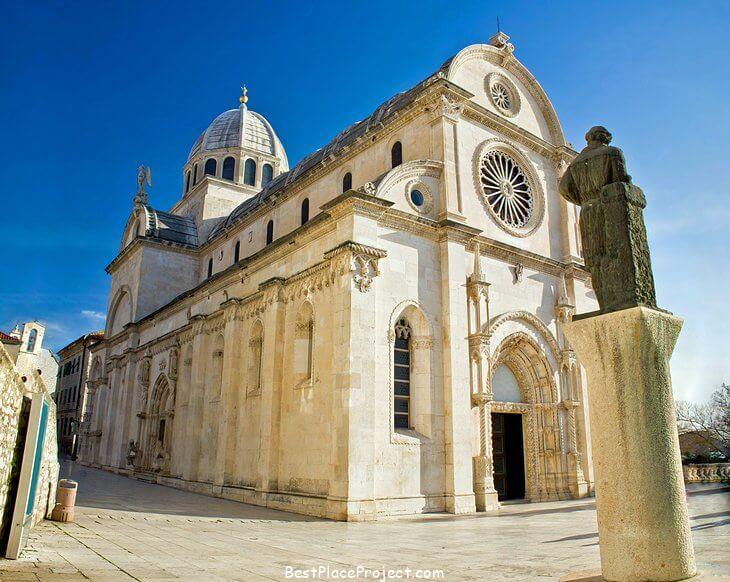
One of the architectural highlights of the Dalmatian Coast is the Cathedral of St. James (Katedrala Sv Jakova) in Sibenik, which is now a UNESCO World Heritage Site.
The construction of this imposing cathedral, which was begun in the early 15th century and took more than 100 years to finish under the first supervision of Venetian architect Antonio Dalle, was later overseen by sculptor Jurac Dalmatinac and then by Nikola Firentinac.
Several architectural styles, including the Gothic lower level and the Renaissance upper level, were combined throughout construction.
The magnificent frieze on the exterior of the apse, which contains more than 70 distinct faces representing common citizens from the 15th century, is one of the building’s most notable characteristics.
In Ibenik, Croatia, near Trg Republike Hrvatske 1, 22000
14. See Sibenik’s Old Town Hall
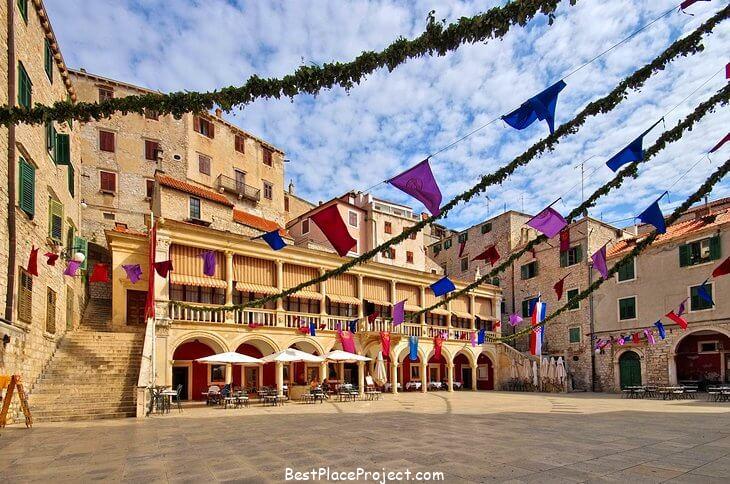
Just across the plaza from the cathedral, the magnificent historic two-story Sibenik Town Hall (Gradska vijecnica) is well worth a visit.
This magnificent specimen of Renaissance architecture, which comes from the middle of the 16th century and was created by renowned architect Michele Sanmicheli, is noted for its lovely massive columns, arches, and balustrade.
Despite being extensively damaged in a WWII Allied air raid on Sibenik, the structure was totally reconstructed using the original blueprints.
Postal Code: 22000 Sibenik, Trg Republike Hrvatske 3,
13. Take in the Views from St. John’s Fortress
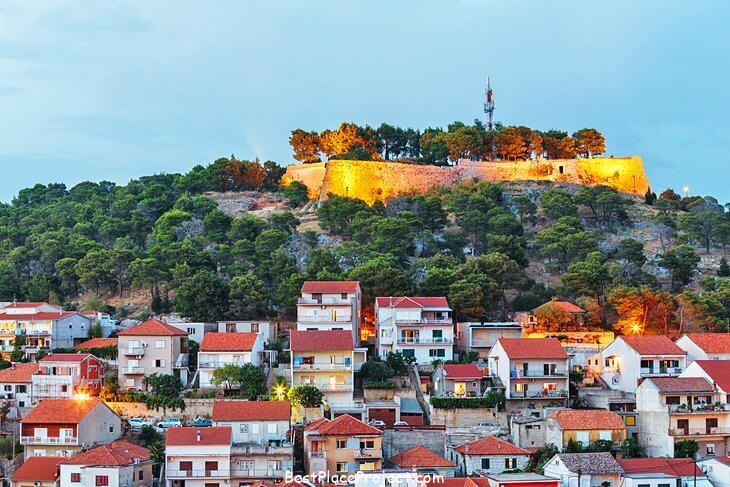
With no less than five strongholds guarding it, Sibenik was one of Europe’s best secured cities throughout the 16th century. St. John’s Fortification, positioned atop a hill about 115 metres above the city centre, is the highest fortress in the area. From the ancient town, it is a ten-minute climb uphill that is exhausting.
The fortification was built in 1646 to defend Sibenik against Turkish assaults. Residents of the city helped build the stronghold, which was finished in a record six weeks because they were so scared of these incursions. Stunning vistas may also be seen from the top.
Check the stronghold’s official website below for specifics as some areas of the fortress may not now be accessible to the general public due to restoration work.
Ibenik, Croatia, Ul. Sedmog kontinenta 27, 22000
12. Attend a Concert at St. Michael’s Fortress
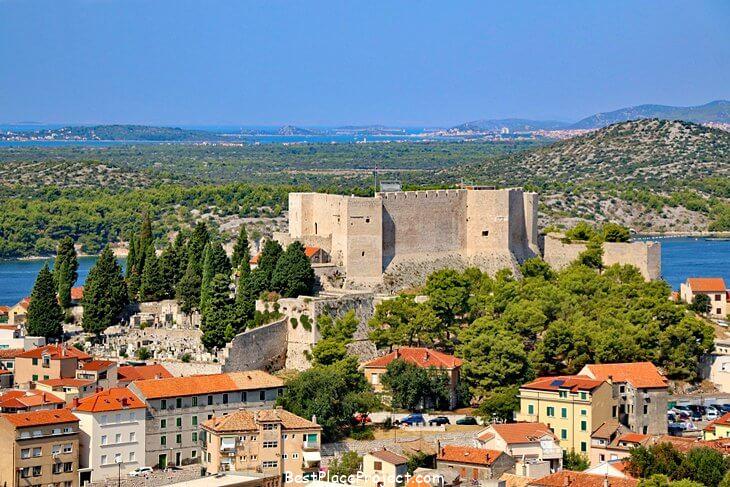
Another of Sibenik’s five fortifications, St. Michael’s Fortress (Tvrava sv. Mihovila), is where the city was founded.
It was built in the Middle Ages and is located in the centre of the ancient town atop a hill. Fantastic panoramic views of the city and the Adriatic Sea may be enjoyed from the summit.
Additionally, there is an outdoor stage where events like concerts are held all year round. It is a special experience if you can schedule your visit with a performance.
Croatia’s Ibenik is located at Zagrae 21.
11. The Church of St. Barbara
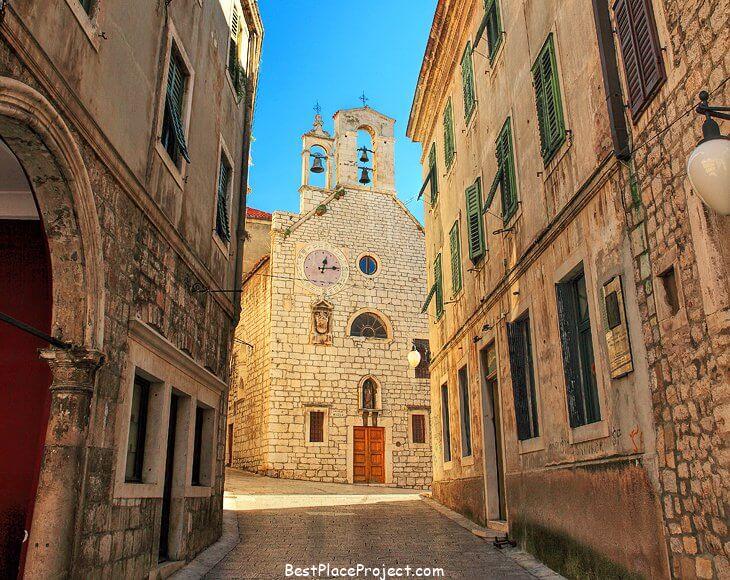
The charming little Church of St. Barbara (Sv. Barbara), which is located directly behind Sibenik Cathedral, is home to a modest but significant collection of sculptures and paintings from the 14th to the 18th century.
This single nave church, which was constructed in the mid-1600s on the site of an earlier structure, is noted for its unusual façade, which features irregularly shaped apertures, as well as a statue of St. Nicholas by Bonino of Milan from the 15th century.
Two separate altars can be found in the inside, one from the original church and the other a later addition that was created to complement the first.
10. The Count’s Palace & Šibenik City Museum
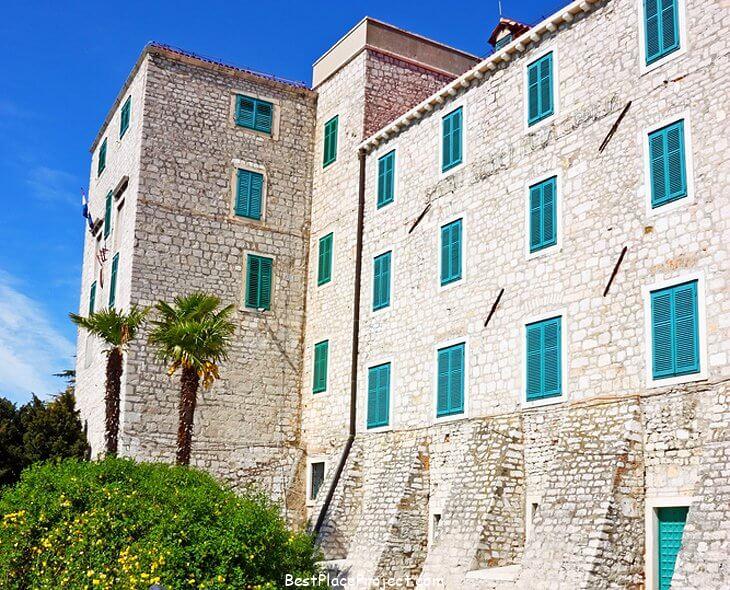
Paying a visit to the Count’s Palace, which is only a short trip from Sibenik Cathedral, is another of the best things to do in the city.
During the Venetian era of authority in the 16th century, the Rector’s Palace, a structure from the late Renaissance, was initially designed to house the governor.
The Ibenik City Museum is now housed in the palace (Muzej Grada Sibenika). Sculptures (some from the 7th century), a coin collection, and other random objects from the area are among the numerous local archaeological artefacts that date from Neolithic to Roman times that make it worthwhile to see.
In Ibenik, Croatia, at Ul. Gradska vrata 3, 22000
9. Explore the Dalmatian Ethno Village
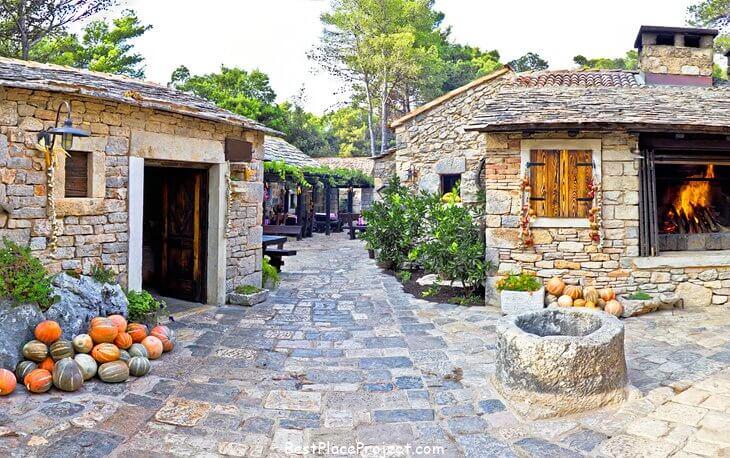
The Dalmatian Ethno Village, one of Croatia’s more recent tourist destinations, offers excellent insight into the lives of the locals of the region throughout history.
It is a part of the Solaris Beach Resort complex, which is not far from Sibenik, and it provides the opportunity to see and learn how traditional dishes and baked goods are made. You can even sample them before taking a stroll through the winding, cobbled alleyways.
A tour should also involve seeing an authentic olive press, a 100-year-old watermill, craft fairs, and weaving classes. While in the resort, you can also go to one of the lovely pebble and stone beaches.
In Croatia, at Hoteli Solaris 86, HR-22000 Sibenik
8. Have a Splash at Aquapark Solaris
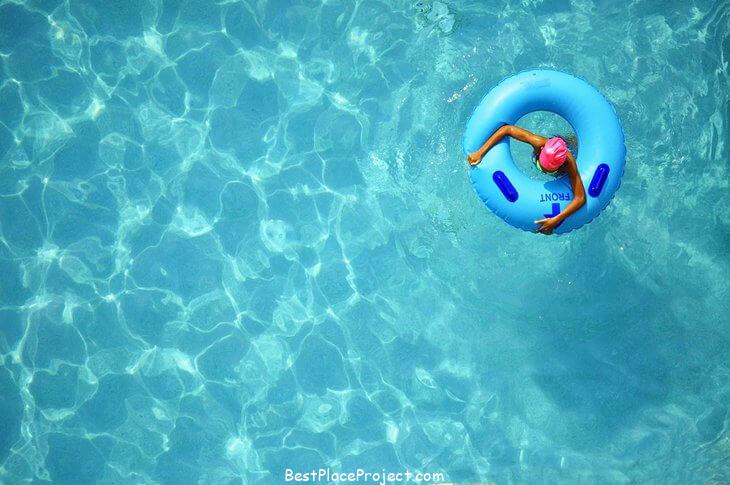
Check out Croatia’s first water park, Aquapark Solaris, for a pleasant activity during the warmer months.
It has a range of family-friendly water elements in a number of pools, including waterslides, sprinklers, waterfalls, and a lazy river.
Additionally, there is a separate area for children that includes a fairy-tale tunnel that transports kids to another planet. On-site refreshments are also offered for sale, including homemade ice cream.
Croatia’s Ibenik, Hoteli Solaris 86, 22000
7. Take a Boat Ride to St. Nicholas Fortress
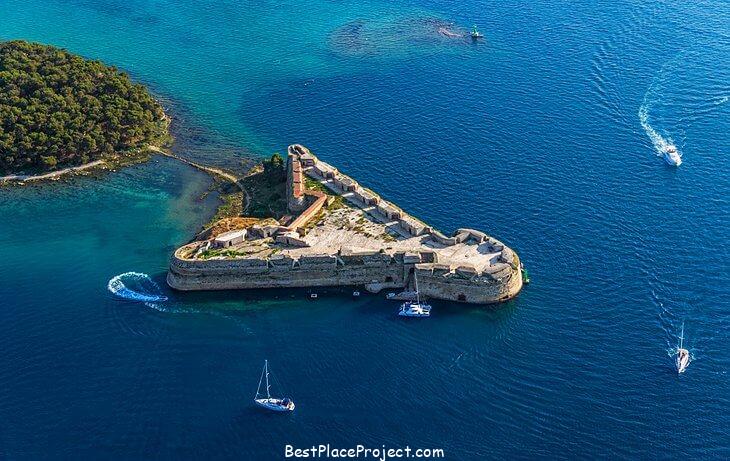
St. Nicholas Fortress (Tvrdava Sv. Nikole), one of only three such forts still standing in the Mediterranean, was constructed in the 16th century to protect the port of Sibenik from Turkish attack by sea (the others are in Venice and Malta).
On a tiny island off the mainland, the fortification, which resembles an arrowhead, was constructed on the site of a previous monastery. It was built by renowned Venetian architect Hyeronimus di San Michaela and originally possessed a powerful 32-cannon armament.
This brick and stone stronghold, which is more than 500 years old, is best viewed as part of a scheduled tour of the city or by private charter because of how beautifully kept it is despite its age.
The following address is in Ibenik, Croatia: Info centar Tvrave sv. Nikole, Obala dr. Franje Tumana 4, 22000
6. See the Waterfalls and Wildlife at Krka National Park
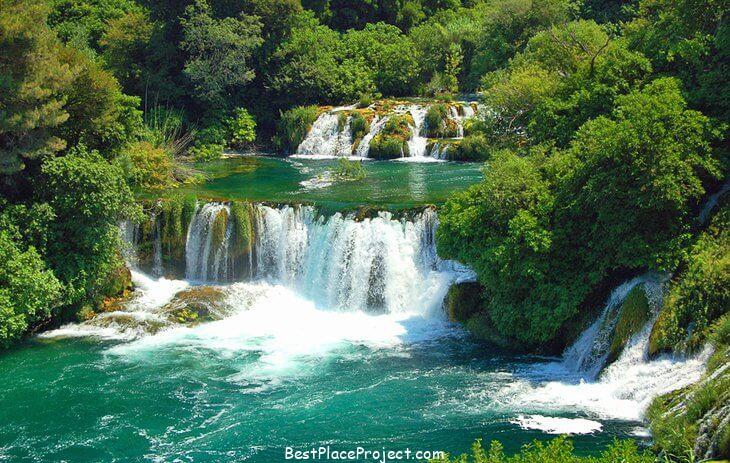
The Krka National Park (Nacionalni Park Krka), which was created in 1985, safeguards the region surrounding the middle and lower reaches of the River Krka, which is significant biologically. As the river descends from its upper stages, it encounters a number of lakes, rapids, and the stunning Roski Slap and Skradinski Buk waterfalls.
The Krka River joins the River Cikola near Lake Visovac, which is located in the middle of the park and right below the Roski Slap waterfalls, before running over Skradinski Buk and out to sea.
With over 200 different bird species, including herons and egrets, the park is a well-liked spot for birdwatchers. The early 15th-century Orthodox Krka Monastery (Arandjelovac) and Samostan Visovac, the island monastery on Lake Visova, are just two of the city’s notable cultural landmarks. The waterfalls are easily accessible from Lozovac and Miljevci and can also be visited by boat from Skradin for a really enjoyable excursion.
The following address is in Sibenik, Croatia: Trg Ivana Pavla II. br.
5. Enjoy a Scenic Side Trip to Drnis
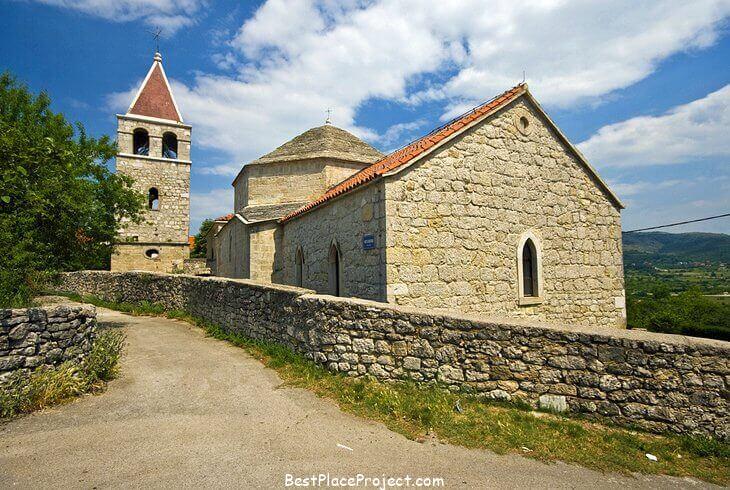
The charming little town of Drnis, which was formerly well-known for its 15th-century fort constructed as an invasion defence, is only 30 kilometres inland from Sibenik.
Eventually, the fort was taken, and Drnis was conquered by the Turks, who erected a mosque and Turkish baths among other significant buildings.
Some remnants of the occupancy can still be seen, such as in the church of St. Anthony, which was constructed using the ruins of the previous mosque, even if many of them were later destroyed during fighting in the 16th century.
4. The Church of St. Francis

The Church of St. Francis (Sv. Frane), one of Sibenik’s excellent older structures, has undergone several reconstructions and alterations throughout the years.
The church, which was initially built in 1229, was mostly demolished the following century, although some of the old cloisters were preserved and used in the 16th century’s reconstruction.
The church had yet another makeover in the 18th century after being totally rebuilt in the Baroque style and having its interior painted. A well preserved organ made in the 1760s by Petar Nakic is of great importance inside.
In Sibenik, Croatia, at Trg Nikole Tomaszea 1.
3. Take a Drive to Otavice and the Mestrovic Mausoleum
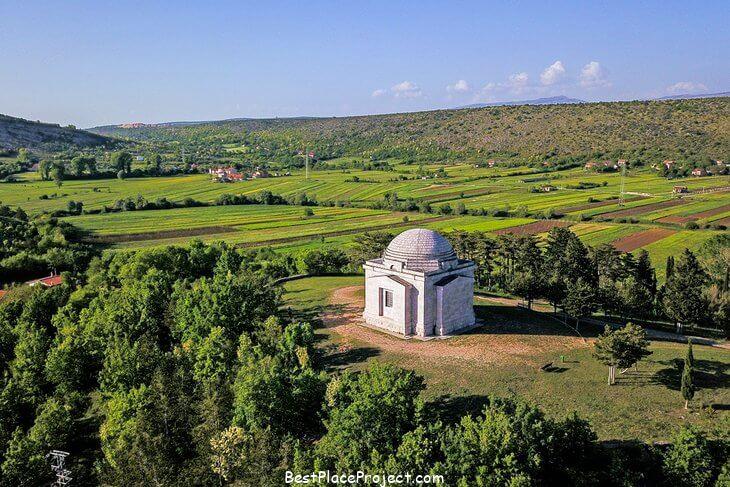
A trip to the neighbouring village of Otavice is unquestionably worthwhile if you can tear yourself away from the numerous wonderful sites and activities of Sibenik for a few hours.
One of the country’s most well-known artists was buried in this tiny community, which is only 35 kilometres away, making it a well-liked destination for pilgrims who study the arts.
The Mestrovic Mausoleum, also known as the Church of the Most Holy Redeemer, was built to the sculptor’s specifications and is perched on a hill overlooking the settlement. It contains the remains of Ivan Mestrovic and his family, who resided nearby, and was finished in 1930.
The mausoleum’s inside is pretty impressive. It’s worth noting that many of the motifs and reliefs were really finished by the artist’s students. There are guided tours available, which are strongly advised.
Croatian address: Otavice, 22 322 Rui
2. Enjoy an Island Adventure in Primosten
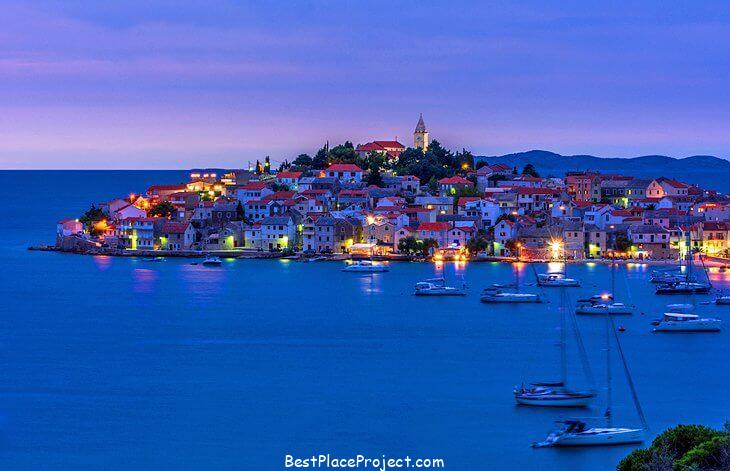
Another wonderful day trip from Sibenik is to the charming tiny village of Primosten. This charming and wholly distinctive hamlet, which is about 20 kilometres southeast of Sibenik, spreads out from its original island centre onto the mainland, which it is connected to by a causeway.
From a distance, the island appears to be completely taken over by its magnificent historic structures, which stretch across every square inch of the ground. Exploring its beautiful ancient mediaeval streets is even more enjoyable as a result of this nice impact.
The mediaeval town centre, the rocky shoreline with views of the Adriatic and the mainland, and the pebble beaches are the highlights of this enjoyable day excursion. You should also go to the 15th-century Church of St. George, which is famous for its historic cemetery and lovely vistas.
1. City Hall
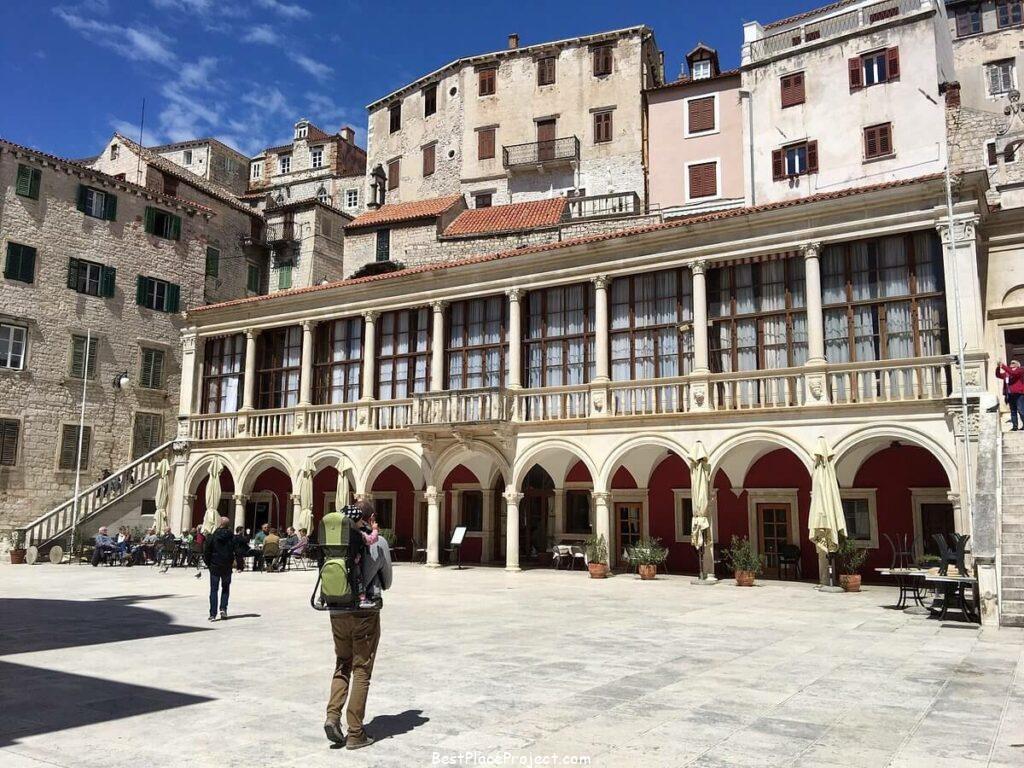
A strikingly harmonious Renaissance building situated on the Republic of Croatia’s medieval Square in the very heart of the city, the City Hall of Šibenik, was constructed between 1533 and 1546. Its beautiful façade is made up of columns and arches, a balustrade, and a balcony.
The ground floor is home to a wonderful local restaurant, the outside terrace of which provides an extraordinary view of the Cathedral of St. James (see below).
Although the City Hall was entirely leveled during an allied air raid in 1943, it was meticulously rebuilt and now looks exactly like it did before World War II.

I love traveling and exploring new places and this website is all about listing all best places in the world that you can go and explore.






